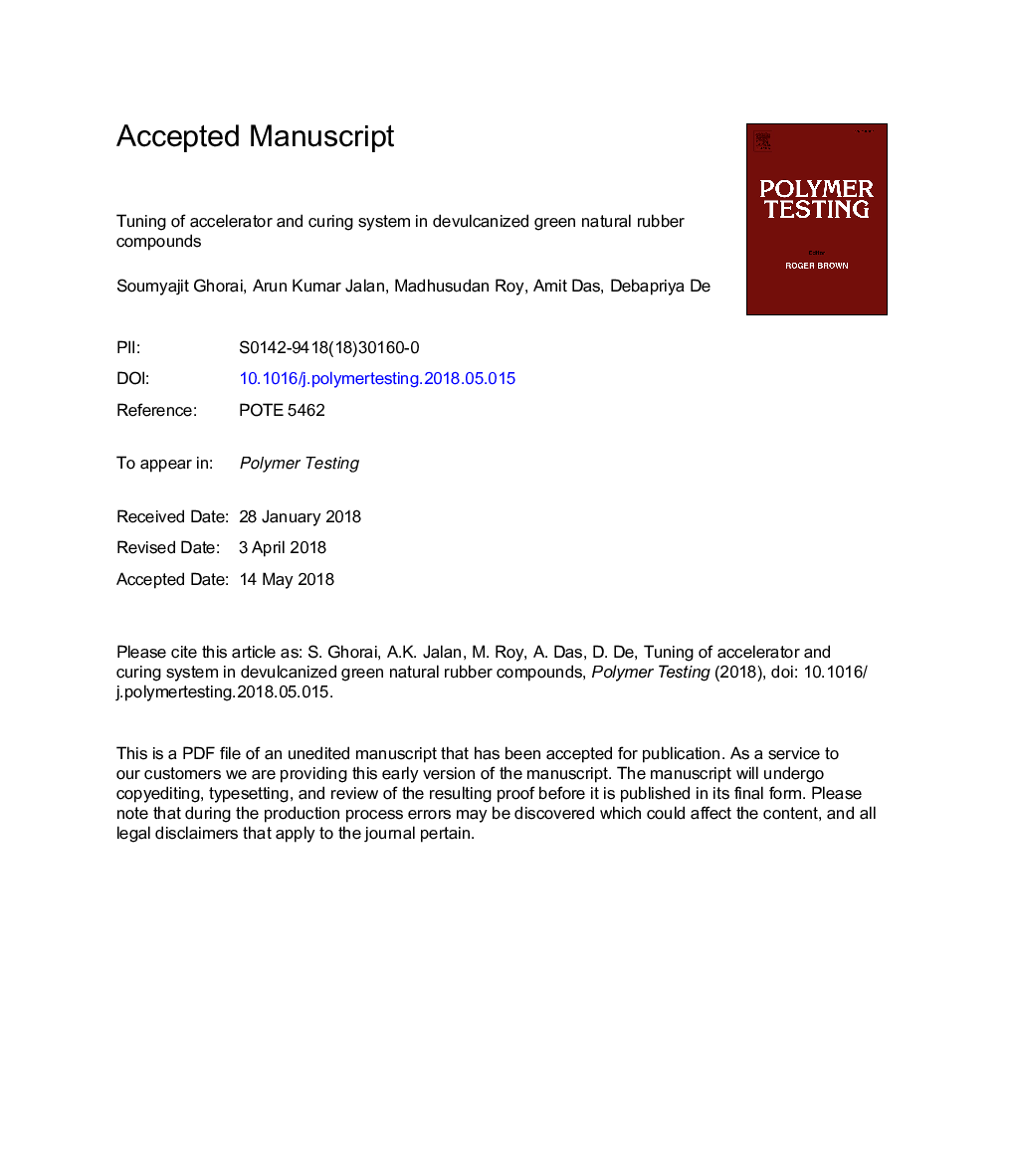| Article ID | Journal | Published Year | Pages | File Type |
|---|---|---|---|---|
| 7824652 | Polymer Testing | 2018 | 56 Pages |
Abstract
These days sustainable ecosystem warrants cleaner, safer and easier mobility of resources in a production cycle. In a response of such call, in this present work, sulphur crosslinked natural rubber (NR) is successfully devulcanized using bis(3-triethoxysilyl propyl) tetrasulfide (TESPT) - a dual function disulfide chemical. It is observed that the mono-, di- and poly sulfide crosslinks, those determine the final performance of the composites, can be controlled by using various chemicals like N-cyclohexyl-benzothiazyl-sulphenamide (CBS), tetramethylthiuram disulfide (TMTD), 2-mercaptobenzothiazol (MBT) and N-tert-butyl-2-benzothiazyl-sulphonamide (TBBS). Subsequently different vulcanizing systems like conventional, efficient and semi efficient vulcanization systems were also studied. Furthermore, in the optimization of vulcanizing system, semi-EV showed the highest mechanical properties compared to that of the CV and EV system. The study shows a unique correlation between the crosslink density, (mono-, di- and polysulfide) and the mole % uptake of the solvent with time. It also shows the dependence of the fraction of immobilized polymer chain and the segmental dynamics of the composites on the crosslink density.
Related Topics
Physical Sciences and Engineering
Chemistry
Organic Chemistry
Authors
Soumyajit Ghorai, Arun Kumar Jalan, Madhusudan Roy, Amit Das, Debapriya De,
